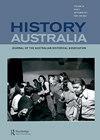蒂姆·里夫斯(Tim Reeves)策划了一起分水岭犯罪的过程及其后果
IF 0.4
Q3 Arts and Humanities
引用次数: 0
摘要
2022年是乔治·伊恩·奥吉尔维·邓肯医生逝世50周年,他被称为伊恩。他搬到阿德莱德,在阿德莱德大学法学院任职,六周后,他的尸体在托伦斯河的浑水中被发现。邓肯死的时候,大学后面的河岸是Beat Number 1的所在地。蒂姆·里夫斯(Tim Reeves)是研究邓肯谋杀案的最重要的专家,这对同性恋生活和法律改革的历史具有重要意义。最初作为一篇荣誉论文,后来成为2022年阿德莱德艺术节委托创作的一部强大的清唱剧《分水岭》和这本书《邓肯博士之死》的基础。这部清唱剧的标题表明了邓肯谋杀案的非凡影响,最终导致了南澳大利亚州将同性恋合法化,这是澳大利亚第一个采取这一举措的州,也是英语世界中第一个在刑法中消除同性恋和异性恋之间区别的司法管辖区,包括同意年龄。邓肯的死应该与这项法律改革紧密联系在一起,这尤其令人震惊的是,没有人因造成这一事件而被追究刑事责任。然而,里夫斯明确表示,至少有三名肇事者有时是警察、阿德莱德酷儿社区和南澳主要报纸读者熟悉的名字。但它们仍然是免费的。在缺乏足够的定罪证据的情况下,里夫斯的书证明了他对每一个线索、已发表的和未发表的叙述、以及对那些帮助梳理导致邓肯死亡和影响的事件的人的采访所做的艰苦工作。1972年5月10日晚,南澳警察副队的成员离开威廉国王路上的国王头酒店,前往殴打一号酒店的客人,将三名男子扔进河里。其中一名受害者罗杰·詹姆斯(Roger James)摔断了脚踝,但他设法从河里逃了出来,躲过了进一步的暴力。詹姆斯成为了下一个受害者邓肯溺水案的关键证人,邓肯的尸体在第二天被发现。里夫斯认为,学者的社会地位和邓肯的新同事在推动调查方面的参与,对影响社区态度,进而影响法律史至关重要。正如里夫斯在与大卫·马尔(David Marr)的对话录音中指出的那样(阿德莱德作家节播客,第22集),如果邓肯是来自北部郊区的焊工,就不会有人关心了。本文章由计算机程序翻译,如有差异,请以英文原文为准。
Tim Reeves plots the course of a watershed crime and its aftermath
2022 marked the fiftieth anniversary of the death of Dr George Ian Ogilvie Duncan, known as Ian. He moved to Adelaide for a position in the Adelaide University Law School six weeks before his body was retrieved from the muddy waters of the River Torrens. The riverbank, which runs behind the university, was host to Beat Number One at the time of Duncan’s death. Tim Reeves is the foremost expert on Duncan’s murder, which is significant to histories of queer life and law reform. What began as an honours thesis became the basis of a powerful oratorio commissioned for the 2022 Adelaide Festival – Watershed – and this book – The Death of Dr Duncan. The oratorio’s title signals the extraordinary impact of Duncan’s murder, which ultimately led to the decriminalisation of homosexuality in South Australia, the first Australian state to make this move and the first jurisdiction in the English-speaking world to eliminate a distinction in criminal law between homosexuals and heterosexuals, including the age of consent. That Duncan’s death should be so firmly linked to this law reform makes it especially striking that no one has been made criminally accountable for causing it. However, Reeves makes clear that at least three of those responsible have been, at times, familiar names to police, the Adelaide queer community and readers of major SA newspapers. But they remain free. In the absence of sufficient evidence for convictions, Reeves’ book is a testament to painstaking work with every lead, published and unpublished accounts, and interviews with those who helped tease out the events leading up to and reverberating from Duncan’s death. On the night of 10 May 1972, members of the SA Police Force’s vice-squad left the King’s Head Hotel on King William Road and headed to Beat Number One to rough up its visitors, throwing three men into the river. One victim, Roger James, broke his ankle but managed to get out of the river and escape further violence. James became the key witness in the case of the drowning of their next victim, Duncan, whose body was discovered the following day. Reeves argues that the social status of academics and the involvement of Duncan’s new colleagues in promoting investigations were crucial in influencing community attitudes and, in turn, legal history. As Reeves pointed out in a recorded conversation with David Marr (Adelaide Writer’s Festival Podcast, Episode 22), if Duncan had been a welder from the northern suburbs, fewer people would have cared.
求助全文
通过发布文献求助,成功后即可免费获取论文全文。
去求助
来源期刊

History Australia
Arts and Humanities-History
CiteScore
0.60
自引率
0.00%
发文量
103
期刊介绍:
History Australia is the official journal of the Australian Historical Association. It publishes high quality and innovative scholarship in any field of history. Its goal is to reflect the breadth and vibrancy of the historical community in Australia and further afield.
 求助内容:
求助内容: 应助结果提醒方式:
应助结果提醒方式:


